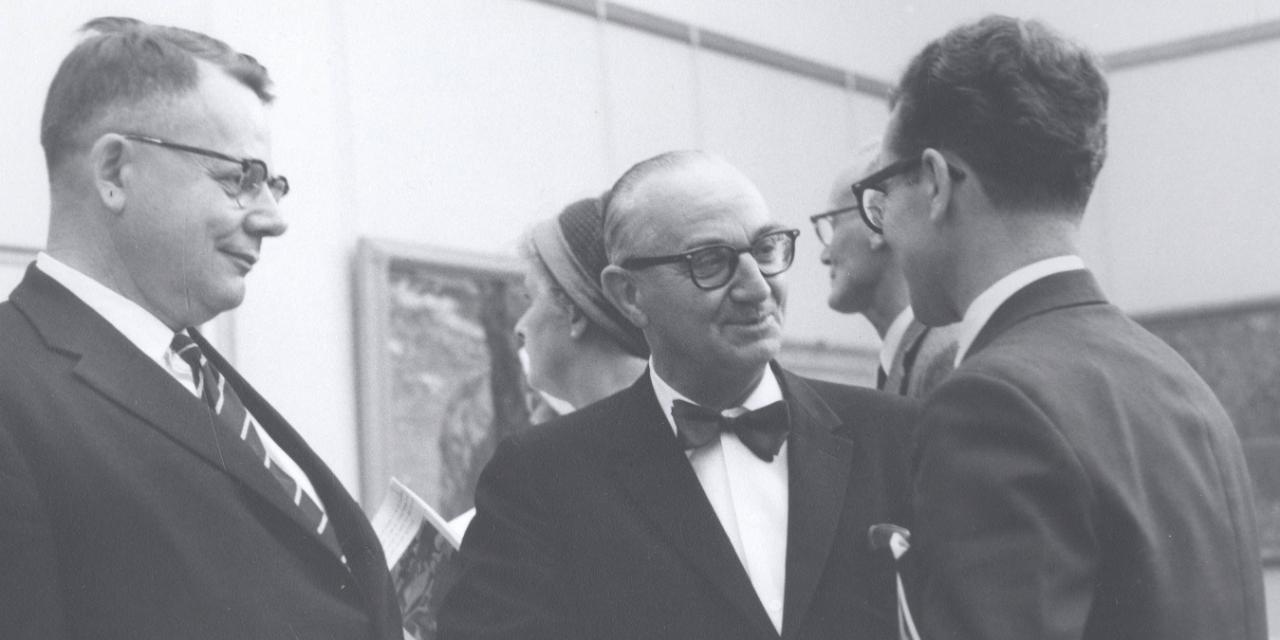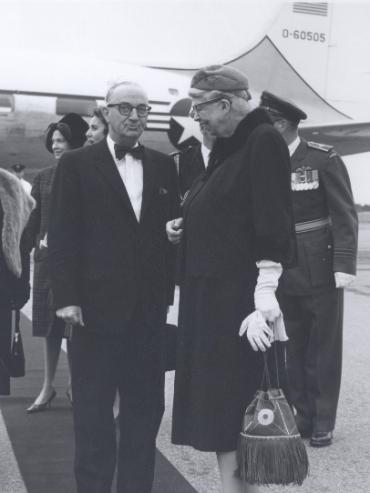Making the modern Memorial
In Newfoundland and Labrador’s modern history, perhaps no figure looms larger than Joseph R. Smallwood. And no one inspires more debate.
For some, he was the primary architect of Newfoundland’s Confederation with Canada and a tireless advocate for the province’s modernization.
For others he was the force behind the controversial resettlement project and the person most responsible for failing to include the Indian Act in the terms of union with Canada, which left generations of Indigenous people in the province without access to federal funding and programs.
But one of his contributions to the future of Newfoundland and Labrador stands as an accomplishment without controversy. He was a vocal proponent of higher education and a vital contributor to the growth of Memorial University.
In 1947, during the Newfoundland National Convention, Dr. Smallwood spoke at length about the need for a university in St. John’s.
At the time, Memorial University College was a modest institution with fewer than 400 students at the Parade Street Campus. And Dr. Smallwood believed that a larger, more contemporary institution was needed.
When he took office as Newfoundland and Labrador’s first premier in 1949, one of his first priorities was to secure federal funding for a new campus. And one of the first acts of his legislature was to elevate Memorial University College to full university status.
He envisioned a modern university that would give young Newfoundlanders and Labradorians the same opportunities as students elsewhere in Canada. And his determination paid off.
In 1961, Memorial moved to its Elizabeth Avenue campus, complete with new classrooms, laboratories and residences. It was no longer a small college but a university ready to serve the entire province.

Joseph Smallwood at the opening of the Memorial University Art Gallery in 1961. Photo from Memorial University Archives.
Dr. Smallwood also insisted that education remain affordable. His government heavily subsidized tuition, making it possible for students from fishing villages, mining towns and outports to pursue degrees without leaving for mainland Canada.
He also pushed Memorial to expand its academic scope. He encouraged the development of professional programs in engineering, medicine and education to meet provincial needs. At the same time, he supported the arts and the study of Newfoundland culture, believing that music, literature and folklore deserved a place in the university.
By sheer force of will, he was also the prime mover behind the establishment of the Marine Institute (MI).
During the early 1960s, Dr. Smallwood approached university officials about the possibility of starting a Faculty of Fisheries at Memorial. But due to federal regulations regarding funding, the plan could not proceed.
Instead, in 1964, Dr. Smallwood’s government established The College of Fisheries, Navigation, Marine Engineering and Electronics at the original Memorial campus on Parade Street, and what we now know as MI was born.
His vision was to launch, nurture and promote educational institutions that would prepare Newfoundlanders for modern economic life while also celebrating their heritage.
Dr. Smallwood’s influence was often direct and sometimes uncomfortably so. He was known to press for rapid growth and occasionally intervened in academic decisions.
This caused friction with university leaders who valued the institution’s independence. Yet, Dr. Smallwood’s determination accelerated Memorial’s development in ways that might otherwise have taken decades.
By the end of his premiership in 1972, enrollment had grown more than tenfold, and Memorial had become one of the fastest-expanding universities in Canada.
In many ways, Dr. Smallwood linked Memorial to the broader story of Newfoundland’s place in Confederation. Just as Canada was meant to provide opportunity and stability, the university was meant to give the province’s people the skills to thrive. And he imagined every graduate as a symbol of progress carrying Newfoundland forward.
